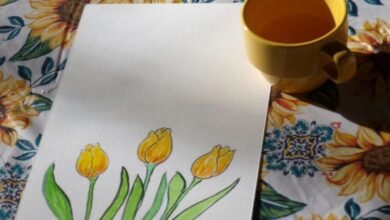Exploring the Creative Possibilities of Text-to-Image AI

Text-to-image AI stands at the intersection of language and visual creativity. This technology processes textual input to generate striking images, reshaping how art is conceived. Artists are discovering new avenues for expression, where words transform into visual narratives. Yet, this evolution raises questions about the nature of creativity itself. As the boundaries blur between human and machine, what implications arise for artistic identity and collaboration? The answers lie in the unfolding dialogue between imagination and innovation.
The Technology Behind Text-to-Image AI
As the boundary between human creativity and machine intelligence blurs, the technology behind text-to-image AI emerges as a remarkable fusion of linguistic interpretation and visual generation.
Utilizing advanced neural networks, these systems engage in text generation, translating descriptive language into vivid imagery. This interplay unveils a landscape where imagination and algorithms coalesce, inviting users to explore uncharted realms of artistic potential and expression.
See also: How to Use Technology to Find the Perfect Home
Transforming Artistic Expression
How does the rise of text-to-image AI redefine the boundaries of artistic expression?
This technology fosters a new era of artistic collaboration, allowing creators to merge their visions with algorithmic ingenuity.
Enhancing Storytelling Through Visuals
What if the essence of a story could be captured not just through words but through evocative imagery that breathes life into the narrative?
Text-to-image AI enables creators to construct a visual narrative, amplifying emotional resonance.
Each image acts as a portal, inviting audiences to explore realms of imagination, where the fusion of visuals and storytelling ignites a profound connection, liberating the narrative from traditional confines.
Redefining Authorship in the Digital Age
In a landscape where digital tools reshape creative landscapes, the concept of authorship undergoes a radical transformation.
Digital ownership blurs as creators engage in collaborative creation with AI, fostering a symbiotic relationship.
This new paradigm invites artists to redefine their roles, embracing fluidity and shared inspiration.
As boundaries dissolve, the essence of creativity evolves, challenging traditional notions of who truly holds the pen.
Conclusion
In the interplay of code and creativity, text-to-image AI emerges as both muse and medium, sculpting dreams from the ether of language. It juxtaposes the human touch with algorithmic precision, weaving a tapestry where imagination dances with data. As artists navigate this evolving landscape, they grapple with the paradox of creation—where authorship blurs and collaboration flourishes. In this digital renaissance, the canvas expands, inviting a kaleidoscope of narratives that redefine the essence of visual storytelling.





